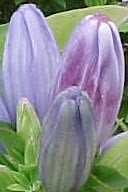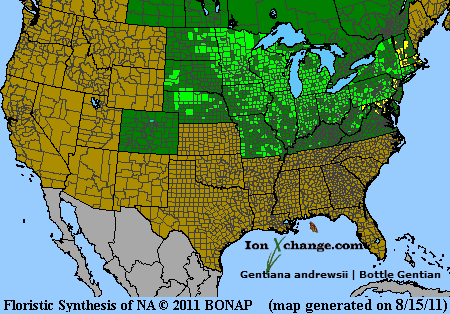 Loading... Please wait...
Loading... Please wait...- Home
- SEEDS
- SEED MIXES
- BUY PLANTS
- Info Request
-
Educational Videos
- Greenhouse Transplanting Demonstration
- Native Seed Cleaning demonstration at Ion Exchange Native Seed and Plant Nursery
- Attracting Butterflies
- Bidens - Bidens cernua Harvest Video
- Big Blue Stem Harvest
- Butterfly Milkweed Video
- Button Blazingstar - Liatris aspera Video
- Buttonbush - Cephalanthus occidentalis Video
- Canada Anemone - Anemone canadensis Harvest Video
- Cardinal Flower - Lobelia cardinalis Video
- Control Burn - Wildflower Field
- Cream Gentian - Gentiana flavida
- Culver's Root - Veronicastrum virginicum Video
- Cup Plant - Silphium perfoliatum Video
- Dormant Seeding | Planting
- Earthyman's Favorite Wildflowers Video
- Eco-Friendly Golf Course Seed Mix
- Floating Islands
- Fringed Loosestrife - Lysimachia ciliata Video
- Giant Yellow Hyssop - Agastache nepetoides Video
- Indiangrass - Sorghastrum nutans Video
- Iowa Prairie Partner Program
- Leadplant - Amorpha canescens (Potted) Video
- Meadow Blazingstar - Liatris ligulistylis
- Midland Shooting Stars - Dodecatheon meadii Video
- Native Plant Nursery Field Irrigation Experiment
- Nodding Onion - Allium cernuum Video
- Ohio spiderwort - Tradescantia ohiensis Video
- Old Man's Beard - Clematis virginiana blooms Video
- Oxeye Sunflower - Heliopsis helianthoides Video
- Prairie Spiderwort - Tradescantia bracteata
- Purple Coneflower - Echinacea purpurea Video
- Rain Garden or Water Garden Video
- Rattlesnake Master - Eryngium yuccifolium Video
- Riverbank Stabilization - Wetland Plants
- Rose Mallow - Hibiscus militaris Video
- Rosinweed - Silphium integrifolium Video
- Royal Catchfly - Silene regia
- Showy Tick Trefoil - Desmodium canadense Video
- Sneezeweed - Helenium autumnale Video
- Swamp Betony - Pedicularis lanceolata Video
- Swamp Milkweed - Asclepias incarnata Video
- Sweet Blackeyed Susan - Rudbeckia subtomentosa Video
- Tall Coreopsis - Coreopsis tripteris Video
- Urban Butterfly Garden
- Wild Bergamot - Monarda fistulosa Video
- Wild Geranium - Geranium maculatum Harvest
- Wild Goldenglow - Rudbeckia lanciniata Video
- Wild Petunia - Ruellia humilis Harvest Video
- Woodland Knotweed - Polygonum virginianum Video
- Yellow Coneflower - Ratibida pinnata Video
- Blog
- Resources
- Policies
Contact Us
Phone:
563-419-0837
or 563-535-7231
Email:
hbright@ionXchange.com
Browse Products
Add to Wish List
You Recently Viewed...
Our Newsletter
Product Description
"Bottle Gentian, Barrel Gentian, Blind Gentian, Cloistered Gentian"
| Sun Exposure | Prairie, Savanna |
| Soil Moisture | Wet Mesic, Mesic |
| Bloom Time |
Summer, Fall August, September, October |
| Bloom Color | Blue |
| Max Height | 2 feet |
| Wetland Code | FACW |
| Germ Code | C(60), D |
| Seeds Per Packet | 750 |
| Seeds Per Ounce | 280,000 |
Genus named for the ancient King Gentius of Illyria, the discoverer of the medicinal properties of these plants and and andrewsii in honor of Dr. Henry C. Andrews, 19th century English botannical artist and engraver.
Found on mesic prairies and woodland edges throughout the Tallgrass Region. Blooms from August and past the first few frosts. Leafy, stout, 20-inch unbranched stems produce up tp 2-inch flowewrs from bright to light blue. Occasional white variants are found.
In Switzerland, a remarkably strong alcolholic beverage is distilled from the fermneted roots of one gentian species.
Edible Uses: Unknown
Medicinal Uses: The root is said to be an antidote to snakebites. An infusion of the roots has been used as a wash and also taken internally in the treatment of pain and headaches. An infusion of the roots has been used as drops for sore eyes. This N. American species has medicinal properties practically identical with the European gentian. The following notes are based on the general uses of G. lutea which is the most commonly used species in the West]. Gentian root has a long history of use as a herbal bitter in the treatment of digestive disorders and is an ingredient of many proprietary medicines. It contains some of the most bitter compounds known and is used as a scientific basis for measuring bitterness. It is especially useful in states of exhaustion from chronic disease and in all cases of debility, weakness of the digestive system and lack of appetite. It is one of the best strengtheners of the human system, stimulating the liver, gall bladder and digestive system, and is an excellent tonic to combine with a purgative in order to prevent its debilitating effects. The root is anthelmintic, anti-inflammatory, antiseptic, bitter tonic, cholagogue, emmenagogue, febrifuge, refrigerant, stomachic. It is taken internally in the treatment of liver complaints, indigestion, gastric infections and anorexia. It should not be prescribed for patients with gastric or duodenal ulcers. The root is harvested in the autumn and dried for later use. It is quite likely that the roots of plants that have not flowered are the richest in medicinal properties.
Herbal Uses: Unknown










